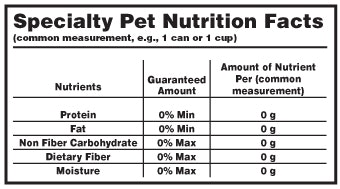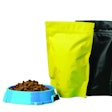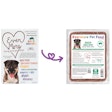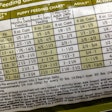
Pet food label modernization is hardly a new idea in the industry. In fact, the American Association of Feed Control Officials’ (AAFCO) Pet Food Committee has had a Pet Food Label Modernization Working Group for years, and things like changes to labeling with respect to nutritional adequacy and feeding directions, nutrient content, ingredient declarations and safe handling instructions have been on the docket for just as long.
In fact, in a 2017 Petfood Industry magazine column discussing AAFCO’s annual meeting, regulatory expert and columnist David Dzanis, DVM, Ph.D., DACVN, first mentioned the idea of a new pet food label: “A proposed ‘Pet Nutrition Facts Box’ to replace the guaranteed analysis on the label would provide nutritional information both in terms of percentages and amounts per household unit (cup, can, etc.),” he said. “The box would also provide calorie content information in terms of per household unit and further break down the number of calories by nutrient category (protein, fat and carbohydrates). The intent for now is also to replace the guarantee for crude fiber with one for total dietary fiber.” Of course, much has happened since those initial conversations, and there is still much to be done before anything is finalized.
Current and proposed requirements for pet food labels
Currently, there are eight required label items for pet food. According to AAFCO, the following must appear on packaging:
- Brand and product name
- Name of species for which the pet food is intended
- Quantity statement
- Guaranteed analysis
- Ingredient statement
- Nutritional adequacy statement
- Feeding directions
- Name and address of manufacturer or distributor
While there are several proposed changes in the works regarding various aspects of these requirements (for example, the addition of a graphical representation of the nutritional adequacy of a product), the main item currently up for debate involves replacing the guaranteed analysis requirement with pet nutrition facts or specialty pet nutrition facts — essentially, a pet food nutrition label that looks very similar to the nutrition box currently found on human food products.
“For pet food labeling today, the challenge is to balance the needs of the consumer with the needs of the regulators and the needs of the companies,” said Angele Thompson, Ph.D., president of Thompson PetTech. “How much needs to be on the label as opposed to discoverable? How can communication to the consumer be fast and meaningful and sufficient to make a good choice?”
The new pet food nutrition label: opportunities and challenges
A new pet nutrition facts box is planned to replace the current guaranteed analysis on pet food packaging, and while discussions have been ongoing for quite some time and consumer focus groups have provided feedback, things are not yet in the clear. According to Dzanis in a 2020 Petfood Industry magazine piece, “The future of US pet food labeling,” the idea is to create a “discrete, easily identifiable section of the label that succinctly conveys information about nutrient and calorie content to the consumer,” much like a human food nutrition label.
The idea of simplifying things for pet food customers is a constantly evolving one in the industry, and making it easier to understand pets’ nutrition has been a consistent demand heard from advocacy groups, veterinarians, customers and pet nutritionists. Successfully providing an easy-to-understand nutrition label could be a significant step in the right direction.
The nutrition facts box as currently proposed by AAFCO will be displayed on the label of all pet foods, including snacks, treats and food supplements, and will contain the following required elements (see Figure 1):
- The unit of common measure and its weight in grams
- A statement of calorie content
- The “Guaranteed Amount” values (protein, fat, non fiber carbohydrate, dietary fiber, moisture)
- The “amount of nutrient per familiar household measure” for each Guaranteed Amount

FIGURE 1: A mock-up of a potential new pet food nutrition label, per AAFCO’s proposed requirements.
One of the more prominent points of debate right now involves the required information concerning carbohydrate content.
“The replacement of crude fiber with a more nutritionally appropriate indicator (i.e., total dietary fiber) appears almost definite,” said Dzanis in 2020. “How to declare related information (e.g., based on a calculated ‘non-fiber carbohydrate’ value versus a more specific ‘starch and sugars’ analysis) is yet to be decided.”
The idea of introducing a calculated number into a mix of historically analytical values is causing concern among some pet food nutritionists.
“My concern with all of it is that you’re going to have, in essence, a guaranteed analysis section which is historically based on analyticals, but now you’re throwing in a carbohydrate section that’s calculated,” said Ryan Yamka, Ph.D., a board-certified companion animal nutritionist and the founder of Luna Science and Nutrition LLC, as well as a Petfood Industry columnist. “AAFCO went through all that time and effort back in the day to get an AOAC (Association of Official Analytical Chemists) method to analyze starch content and added sugars, which is really what they’re trying to get to. Why wouldn’t you use analyzed numbers for that section? Why would you use a totally different equation that somebody’s not accustomed to using if, in theory, your goal is to be transparent?”
In the end, education will be key to success
As always, anything new in the pet food industry will require consumer education to be truly successful.
“This will be a huge change for pet food and specialty pet food labels,” said Thompson. “I don't think we know yet what the consumers will think about all the changes together. Will the changes be helpful for the consumer in making a good choice for the beloved pet?”
And if things come out more confusing than before, what could be the ramifications?
“The fact is it’s cool in concept, because it’s giving you, in theory, more information about the nutrition facts of that package,” said Yamka. “But [those in charge of finalizing the new label] assume most human food consumers look at a nutrition box and understand it. The question is, do they really?”

















